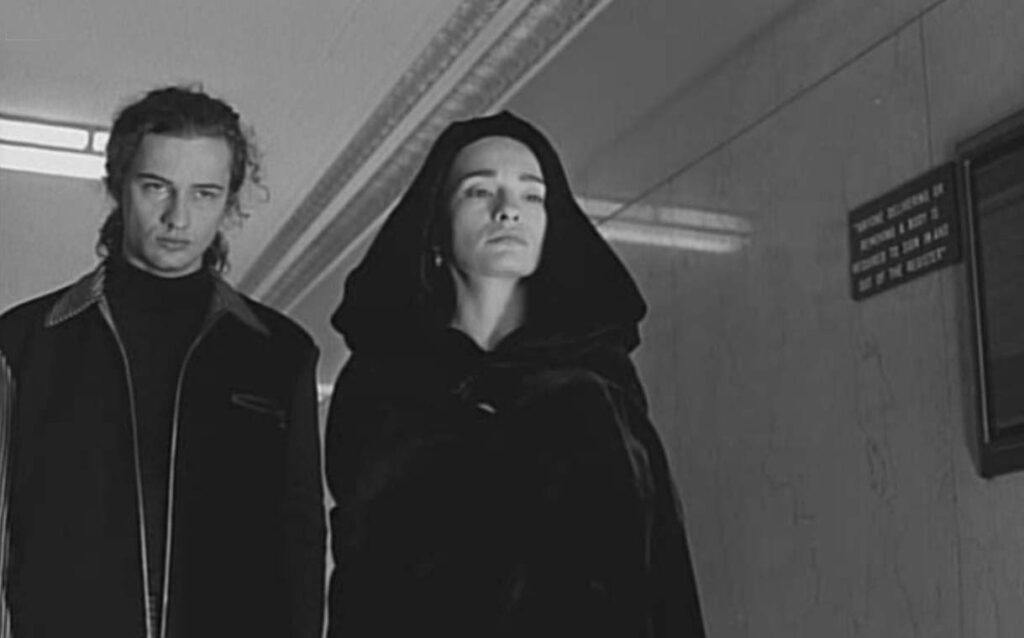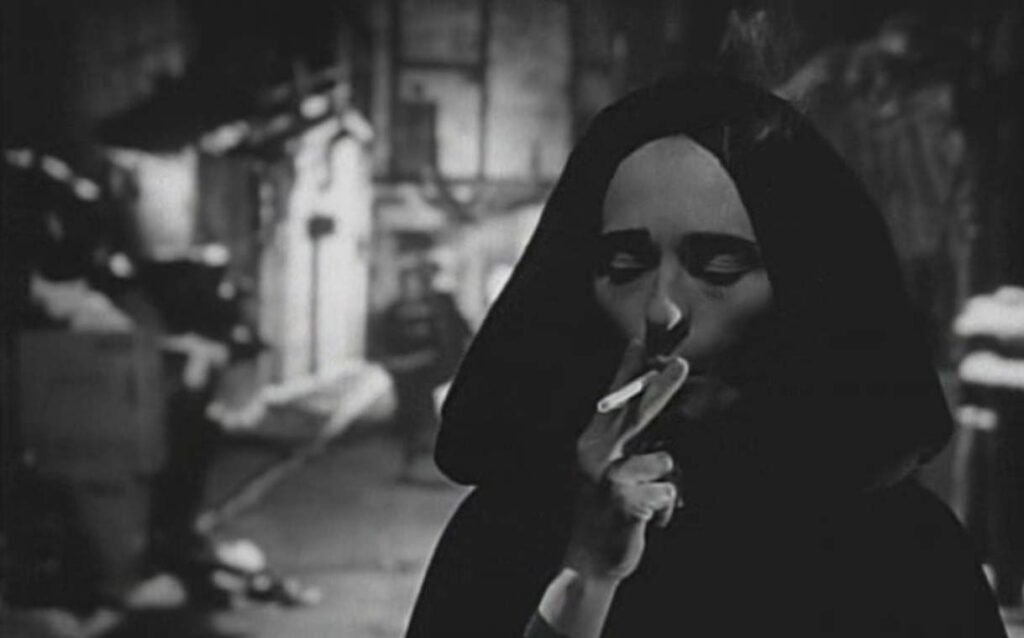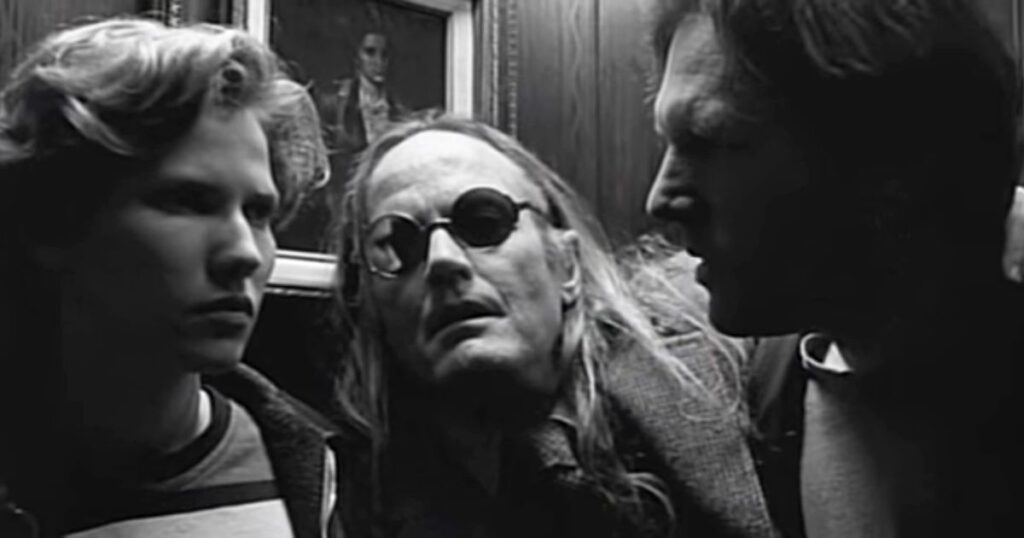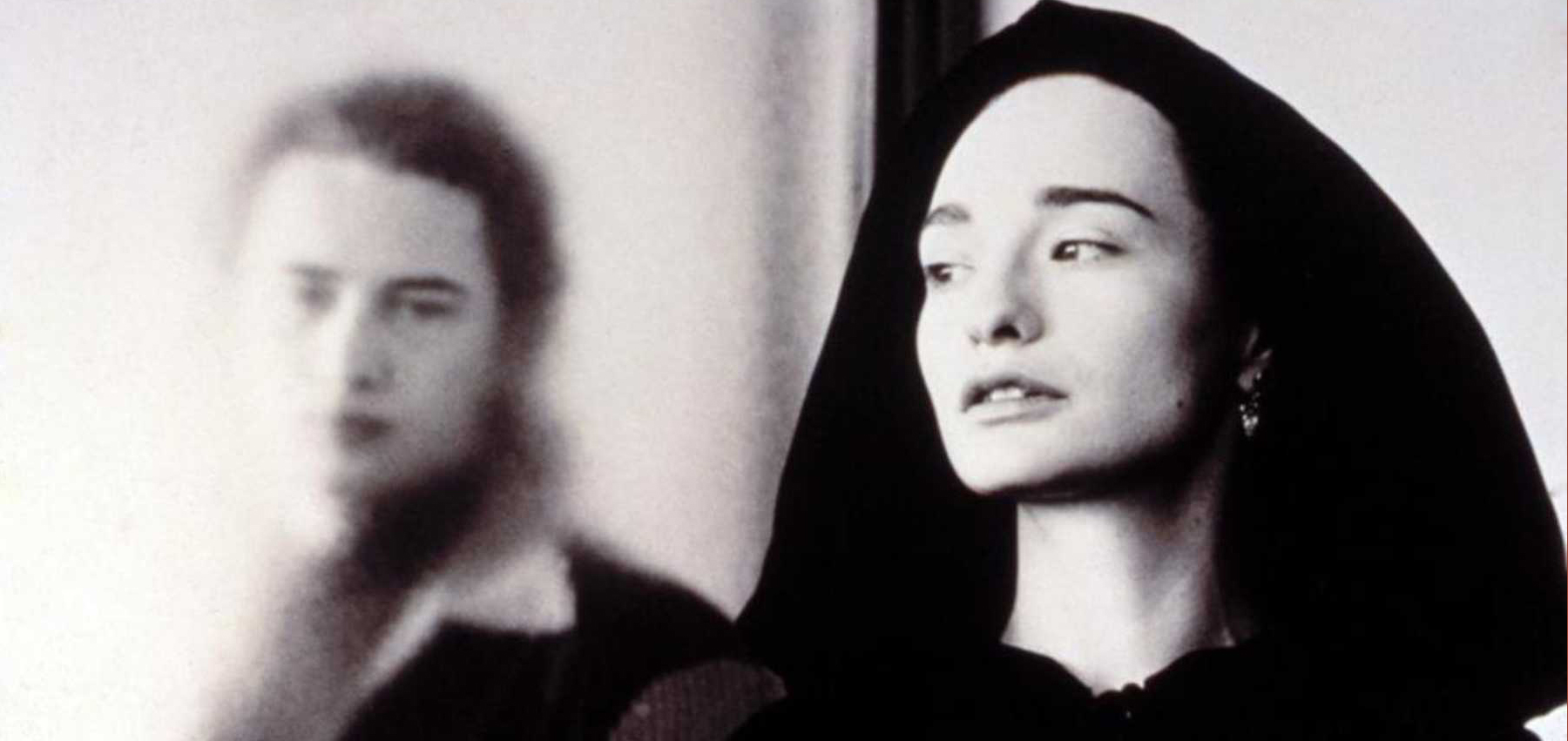It’s not a coincidence that the What We Do in the Shadows features a lead vampire character named Nadja. It would be overstating the case to say the film Nadja was an influence, but I’m absolutely certain that the Shadows creators have seen this strange, low-budget modern vampire story set in New York complete with moments of truly silly humour.
The film begins with Van Helsing finally killing his nemesis, Dracula. Nadja shows up in Brooklyn with her servant, Renfield to claim the body of Dracula, her father. Far from being upset, Nadja is excited about the level of freedom open to her now that her father is dead. Nadja also meets and has sex with a woman named Lucy. But uh-oh! Lucy’s husband is Van Helsing’s nephew so they begin to hunt her. Nadja herself has largely lost interest in Lucy. Her new interest become reconnecting with her brother, Edgar. Edgar has an illness and is being cared for by a nurse named Cassandra. Despite Nadja’s ability to treat Edgar’s illness, he remains cold to her and thinks Nadja a monster. As the film goes on, Nadja’s allies dwindle as with the exception of Renfield, the other characters join Van Helsing in an attempt to stop her.

David Lynch produced, “presented” and has a cameo role in Nadja. That should tell you what kind of film it is. It’s weird. While it’s not wholly surreal, there’s enough unexplained randomness to definitely make it an underground film. About halfway through the film, the genre somewhat shifts as well. Suddenly it’s like the filmmaker became aware of the movie’s pretension and stopped taking it seriously. As the film goes on, there’s more and more moments of overt comedy. As much as I don’t think it was the right choice to not wholly commit to its own set up aesthetic of existential surrealism, the jokes they put in did make me laugh. It’s very funny when Nadja gets punched and all her hair comes off and then she’s bald for several scenes afterwards. I imagine that’s the kind of joke David Lynch likes as well.
Far more than any influence from Lynch, Nadja falls very much into the trends of 90’s underground cinema. As much as the film tries to have a unique identity, it is aggressively part of this larger trend. It’s shot in black and white, for example. There are some financial reasons for this but it’s also just a common thing to see in underground 90s cinema. It’s admittedly nice looking black and white. However, because this was such a large trend in this subgenre, the black and white and several other stylistic choices don’t feel unique. Not that this is necessarily a bad thing, but it’s incredibly easy to place Nadja in a larger framework of cinematic trends of the time.

I do enjoy what the film does with vampires. It focuses on the vampire aspects I like to see. For a start, Nadja is cooler than you. That’s an important quality for a vampire to have. She’s beautiful, mysterious, well-dressed and queer. I want to be her and I want to know her. There’s also some exploration of existential concepts involving vampirism. The film touches on things like the realities of eternal life and the inherent cruelty of feeding on human. Is it just me or did vampires generally have more depth in the 90s? Nowadays vampires are just horny, back then vampires were horny but also philosophical and existentially depressed.
The queerness in the film is fairly minimal. The fallout from Nadja sleeping with Lucy has much more screentime than their actual affair. Nadja basically spends one night with Lucy during which time she places Lucy under a vampiric enchantment that makes Lucy generally obsessed with her but not necessarily in a romantic or sexual way. Lucy also has a pet tarantula which Nadja suggests perhaps has a learning disability. This isn’t relevant to anything, I just thought it was funny. After their night together and despite Nadja enchanting Lucy to be obsessed with her, Nadja ceases to hold interest in Lucy. The story line takes a back burner to Nadja seeing her brother and Lucy’s husband hunting Nadja.

A stylistic choice the movie uses is to drop the camera quality down to whatever is lower than 240p when someone is enchanted by a vampire. I didn’t actually get why this was until I saw another review online explaining that the suddenly shit quality of visuals is the film’s way of expressing a character’s fuzzy mental state when enchanted. On the one hand, these scenes are very bad to look at and before I understand why they did this, I didn’t like it. However, I do also applaud the film for finding a way to show mental enchantment that not only didn’t cost them anything but probably saved them money.
Nadja ends with a happy ending for the character but an undertone of incest which they sort of gloss over. I don’t really know what to make of it either so I too am just going to mention it and move on. Overall, I liked Nadja. It had enough style and decent execution of its ideas for me to rate it positively. It is uneven in its execution but I do think it has more hits than misses. Nadja is stylish, thoughtful and surprisingly funny even if it ends with surprise incest undertones.
Overall rating: 7.1/10
Other WLW films in similar genres
90s indie films


Be First to Comment